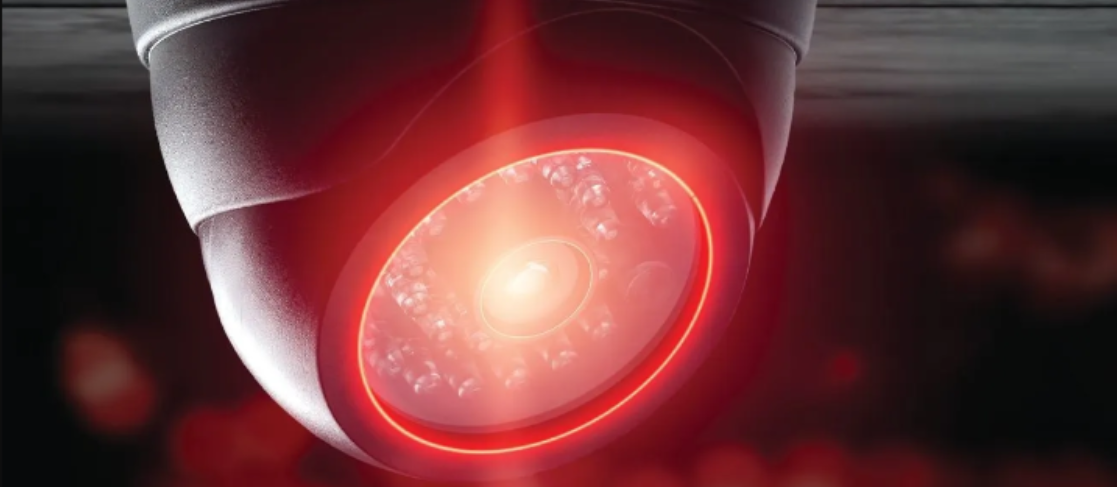Heavy Lifting
A practical guide to load moving options

When a manufacturer of modular single-family homes was building its new manufacturing facility, it had a critical decision to make: how would it move hundreds of separate 76-foot structures (which they call “boxes”) through nearly two dozen assembly stations and out of its facility every year?
Decisions such as these challenge industrial and commercial facilities in all sectors. When they need to move large and heavy loads such as equipment, machinery and products, operators have myriad options from which to choose. Not all move systems are equally feasible or simple to operate or deploy into an existing facility or workflow. Systems like cranes, forklifts, conveyors, rail systems, drag chains, transfer carts, wheel casters and air casters each offer a complex array of advantages and disadvantages according to the needs of each unique application. Indeed, the choice of move system is fundamentally a strategic decision that considers size, weight, logistics, expense, safety and other critical factors. These factors will affect the bottom line, if only indirectly via their impact on productivity and budgetary expenses. The most practical way to make such a decision is through a process of elimination that tackles the different strategic dimensions of each application and situation one at a time.
Overview of load moving systems
When selecting a move system in manufacturing and other industrial settings, the most common options include:
- Cranes These overhead systems lift and transfer heavy items over a sizable area. They offer high lifting capacity but are expensive to purchase, install and operate. They also require skilled operators and usually operate at height, introducing safety risks related to objects falling.
- Forklifts These are mobile vehicles designed to lift and transfer loads on prongs or forks. They are incredibly versatile and can be used in various facilities and settings. Like cranes, however, they require trained operators and introduce safety risks associated with large vehicles whose drivers may have limited visibility and whose loads can become unbalanced, creating a tipping risk.
- Conveyors systems
These are continuous belts or chains that move materials along a specified path. They are an efficient option for repetitive or nonstop moves and can reduce manual handling. However, they represent expensive permanent installations along inflexible fixed paths. They also introduce numerous pinch-points where operators work. - Rail systems
Similar to conveyors, these systems move loads along tracks. They are highly efficient for long, straight pathways, but initial installation can be expensive, and operators are limited to fixed tracks. They also introduce tripping hazards along production floors. - Drag chains
Mechanisms that drag loads across a floor, drag chains are simple, reliable and efficient. Like conveyors and rails, they are expensive to install, usually limited to ground level and can wear out with heavy loads. - Transfer carts
Wheeled carts designed for transferring loads across facilities, transfer carts are incredibly flexible and user-friendly, making them a popular choice in many facilities. The downside is that they are typically bulky relative to how much they can move and might not be suitable for extremely heavy loads. - Wheel casters
These are simple wheel mechanisms attached to loads for easy movement. Wheel casters are cost-effective and easy to use; however, they are limited to ground level, difficult-to-dangerous to operate along slopes or steps and introduce serious ergonomic risks to users with very heavy items. Loads on wheeled casters are more maneuverable than rails or conveyors but are limited in their capacity to turn or side-shift. - Air casters
These lift loads use a cushion of air, effectively turning anything into a hovercraft with omnidirectional movement capabilities. They minimize friction, which makes it easy to move even super-heavy loads at a push. Air casters do require specific floor conditions to operate effectively and must have access to compressed air.
Weight evaluation: The foundation of decision
With so many options available, how can organizations decide which move system is suitable for their use case? The weight of the load to be moved is the place to start the decision-making process. If a given move system cannot support the load, it must be eliminated from the list of possibilities.
Some move systems excel with ultra-heavy loads, while others are better suited for medium or lesser weights. For instance, air casters and wheel casters present almost inverse weight handling capabilities. Air casters can support almost any weight class above 500 pounds, and they have been used to move everything from entire sections of stadium seating to the gigantic caissons underpinning bridges. Users simply add more air casters and air to account for greater weights. Wheel casters, by contrast, top out at around two to three tons, after which more operators are required to provide enough force to push the load. Wheeled casters are impractical for anything weighing more than 25 tons.
Even cranes, another contender for heavy weights, tend to become unsuitable for loads weighing more than 400 tons. Forklifts can manage large loads, but for loads heavier than 10 tons, operators must contend with many tradeoffs, including a rapidly increasing cost for the increasingly larger forked vehicles.
Drag chains, conveyors and rail systems work ideally with weights between 50 and 200 tons, but these systems introduce another complexity: the loading mechanism. Cranes, forklifts and air casters can often be made self-loading. For example, forklifts can drive up and slide the forks under or around the load before lifting. A conveyor hoisting a large, manufactured product, however, might require a secondary move system to get the product onto or off the conveyor. In that case, both the conveyor and the secondary system must be able to support the weight of the load.
Logistics: Speed, frequency & suitability
Beyond weight, how (and how often) an object is moved plays a crucial role in the decision-making process. The chosen move system must fit seamlessly into the physical facility and the existing workflow. Some systems are adept at quick, frequent moves, while others require slow, meticulous transfers to execute safe, successful moves.
Consider an automobile manufacturing plant. Car parts, heavy in their own right, need to be moved rapidly and repeatedly. A conveyor system installed here can become a game changer. Its continuous movement aligns with the production pace, streamlining operations and boosting productivity. When Henry Ford started producing his Model T cars in the early 20th century, his factories used conveyors, reducing the time to manufacture a single automobile from more than 12 hours to just 93 minutes.
Modular homes are large structures whose weight class and unwieldy shapes can potentially confound most move systems. The configuration of the manufacturing process also matters. For example, the Colorado-based modular home builder designed its facility into a high-efficiency, U-shaped assembly line organized around a mezzanine containing all tooling, parts and some offices. A system that requires a permanent, straight-line installation would not fit within its desired workflow.
In other cases, if the object is only moved infrequently but requires precision when it is moved, a forklift or transfer cart might be more appropriate. For example, moving large sculptures in an art warehouse requires care and precision, not necessarily speed.
Expense: Beyond the price tag
After determining the weight and logistics needs and paring down the move systems to choose from, the next step is to evaluate the financial dimension. Ultimately, choosing a move system is an investment and it is crucial to consider both initial and long-term costs. Operation and maintenance costs, fuel, training and certification for operators, costs related to safety (either implementing safety protocols or making payouts for safety lapses), and other expenses will add to the total lifetime cost of the move system. It is important not to underestimate the well-chosen move system’s impact on the bottom line. A moving system that can yield leaner, more efficient manufacturing layouts can increase productivity, and thus, revenue.
One example is the use of cranes. Their lifetime cost is undeniably high, partially because their upfront cost is so high. Yet, productivity gains could make this a worthy investment for tasks that require their capabilities. Conversely, wheel casters have a lower initial cost but might demand more frequent replacement parts, leading to a higher long-term expense. This is why the specifics of the facility and application are important considerations when choosing a move system.
Given their relative simplicity, wheel and air casters fall at the lower end of the cost spectrum. Air casters require little maintenance and virtually no replacement parts. Transfer carts, drag chains and conveyor systems follow air casters as they can be expensive to install but have relatively low to moderate lifetime operating costs. Forklifts and cranes, both complex mechanized systems requiring professional, trained and certified operators, tip the scales at the higher end of the cost spectrum.
Safety considerations: Managing risks for people, objects & environments
Safety in moving heavy objects is not merely a checkbox to mark off a list; it is a fundamental pillar of successful operations. In the realm of moving heavy objects, the potential risks are many. It ranges from the peril operators face to the danger of damaging the object being transported or even the facility infrastructure. Bystanders can also be at risk. A July 2023 crane collapse in busy New York City injured nine civilians and three firefighters.
Personnel safety tops the list of potential dangers. Injuries can arise from system malfunctions, incorrect usage or unforeseen accidents such as tipping over. The risks can be subtle, too. A small load placed on a modest transfer cart pushed by hand might seem like a simple solution that sidesteps the risks of more complicated systems with moving parts; however, it can produce physical strain that can easily result in ergonomic injury. Back injuries alone account for one out of every five workplace injuries. Even conveyors can be shockingly risky, causing dozens of deaths and thousands of injuries annually.
The safety of the object being moved is also paramount. Shock loads or vibration during the move could cause a delicate wafer prober unit in semiconductor manufacturing to decalibrate or suffer damage, resulting in expensive repairs and even more costly downtime.
Lastly, preserving the physical integrity of the facility itself is essential. That wafer prober is likely being maneuvered within a cleanroom environment with specially treated floors that might not be able to support as much weight as a normal concrete floor. Moving a multi-ton machine on wheels would concentrate the entire weight of the load at specific points, which could damage delicate (and expensive) specialized flooring.
Eliminate options until only one floats to the top of the list
When the modular home builder evaluated its choices, it immediately eliminated several options. Transfer carts could not manage the weight, forklifts could not manage the size, and cranes would only work within their envelope and thus could not accommodate cross-bay transfers or moving the boxes out of the facility. Conveyors, drag chains and rails would not fit the company’s desired U-shaped assembly line. As a result, the builder selected the only remaining system that met all its needs: air casters.
Other facilities might end up with a different decision. The uniqueness of every move means no two operations will have the same requirements. Selecting a heavy load moving system is not a one-size-fits-all decision. It is a nuanced journey in which understanding the specific weight, logistics and expense needs narrows down the options, guiding facility operators to the best fit. Through this process of elimination, operators can ensure the safety and efficiency of their facilities and a sound financial investment for their organizations.

Devin Chandler, BSME, is a sales engineer in the Custom Products Group at AeroGo Inc.
References
umd.edu/about/occupational-safety-health/ergonomics/back-injuries-fact-sheet
workplacepub.com/material-handling/conveyors-sortation/minimize-conveyor-injury-risks-with-safeguarding/
Read more on Operations & Maintenance , Project Management and Technology
Explore All FMJ Topics









